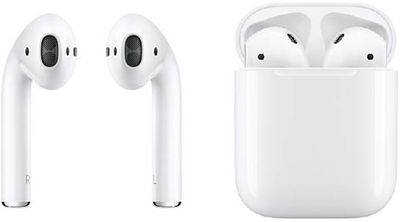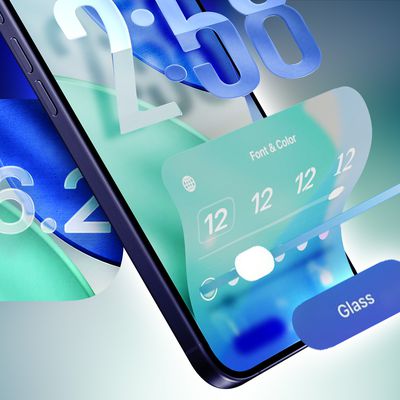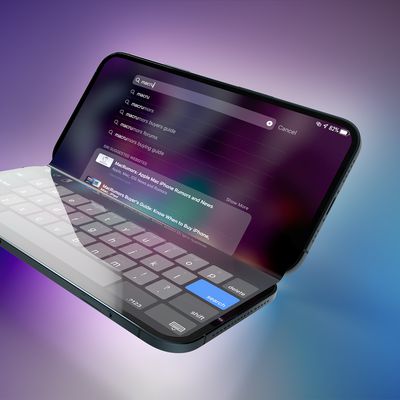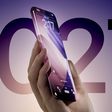AirPods Delay Attributed to Apple Ensuring Both Earpieces Receive Audio at Same Time [Updated]
AirPods were originally slated to launch in October, but the wireless earphones were later delayed. Apple said it needed "a little more time" before they are ready for customers, and it has yet to provide an official update since.

While the exact reason for the delay remains unclear, a person familiar with the development of AirPods told The Wall Street Journal that Apple's troubles appear to be related to its "efforts to chart a new path for wireless headphones," in addition to resolving what happens when users lose one of the earpieces or the battery dies.
A person familiar with the development of the AirPod said the trouble appears to stem from Apple’s effort to chart a new path for wireless headphones. In most other wireless headphones, only one earpiece receives a signal from the phone via wireless Bluetooth technology; it then transmits the signal to the other earpiece.
Apple has said AirPod earpieces each receive independent signals from an iPhone, Mac or other Apple device. But Apple must ensure that both earpieces receive audio at the same time to avoid distortion, the person familiar with their development said. That person said Apple also must resolve what happens when a user loses one of the earpieces or the battery dies.
Last month, Barclays analysts said AirPods should enter production in December. Their research note said quantities would be limited to between 10 and 15 million AirPods to start. Meanwhile, an alleged email response from Apple CEO Tim Cook said AirPods should begin shipping over the "next few weeks."
With just two weeks remaining in the holiday shopping season, some believe Apple should now wait until the new year to launch AirPods, in line with an early rumor about a January 2017 launch. The wireless earphones remain listed as both "coming soon" and "currently unavailable" on different sections of Apple's website.
Update: Apple blogger John Gruber says he's heard that manufacturing issues have delayed the AirPods, rather than a technical problem.
It makes more sense to me that Apple has run into a manufacturing problem, not that they discovered a design defect after they were announced.
"More difficult to manufacture at scale than expected" is also what I've heard through the grapevine, from a little birdie who knows someone on the AirPods engineering team. Things like what happens when you lose one or the battery dies -- Apple solved those problems during development.
Popular Stories
In select U.S. states, residents can add their driver's license or state ID to the Apple Wallet app on the iPhone and Apple Watch, and then use it to display proof of identity or age at select airports and businesses, and in select apps.
The feature is currently available in 13 U.S. states and Puerto Rico, and it is expected to launch in at least seven more in the future.
To set up the...
While the iPhone 18 Pro and iPhone 18 Pro Max are not expected to launch for another nine months, there are already plenty of rumors about the devices.
Below, we have recapped 12 features rumored for the iPhone 18 Pro models.
The same overall design is expected, with 6.3-inch and 6.9-inch display sizes, and a "plateau" housing three rear cameras
Under-screen Face ID
Front camera in...
Apple hasn't updated the Apple TV 4K since 2022, and 2025 was supposed to be the year that we got a refresh. There were rumors suggesting Apple would release the new Apple TV before the end of 2025, but it looks like that's not going to happen now.
Subscribe to the MacRumors YouTube channel for more videos.
Bloomberg's Mark Gurman said several times across 2024 and 2025 that Apple would...
Earlier this month, Apple released iOS 26.2, following more than a month of beta testing. It is a big update, with many new features and changes for iPhones.
iOS 26.2 adds a Liquid Glass slider for the Lock Screen's clock, offline lyrics in Apple Music, and more. Below, we have highlighted a total of eight new features.
Liquid Glass Slider on Lock Screen
A new slider in the Lock...
The European Commission today praised the interoperability changes that Apple is introducing in iOS 26.3, once again crediting the Digital Markets Act (DMA) with bringing "new opportunities" to European users and developers.
The Digital Markets Act requires Apple to provide third-party accessories with the same capabilities and access to device features that Apple's own products get. In iOS...
2026 is almost upon us, and a new year is a good time to try out some new apps. We've rounded up 10 excellent Mac apps that are worth checking out.
Subscribe to the MacRumors YouTube channel for more videos.
Alt-Tab (Free) - Alt-Tab brings a Windows-style alt + tab thumbnail preview option to the Mac. You can see a full window preview of open apps and app windows.
One Thing (Free) -...
Apple's first foldable iPhone, rumored for release next year, may turn out to be smaller than most people imagine, if a recent report is anything to go by. According to The Information, the outer display on the book-style device will measure just 5.3 inches – that's smaller than the 5.4-inch screen on the iPhone mini, a line Apple discontinued in 2022 due to poor sales. The report has led ...
Samsung is working on a new foldable smartphone that's wider and shorter than the models that it's released before, according to Korean news site ETNews. The "Wide Fold" will compete with Apple's iPhone Fold that's set to launch in September 2026.
Samsung's existing Galaxy Z Fold7 display is 6.5 inches when closed, and 8 inches when open, with a 21:9 aspect ratio when folded and a 20:18...
Apple is working on a foldable iPhone that's set to come out in September 2026, and rumors suggest that it will have a display that's around 5.4 inches when closed and 7.6 inches when open. Exact measurements vary based on rumors, but one 3D designer has created a mockup based on what we've heard so far.
On MakerWorld, a user named Subsy has uploaded a 1:1 iPhone Fold replica (via Macworld), ...

























